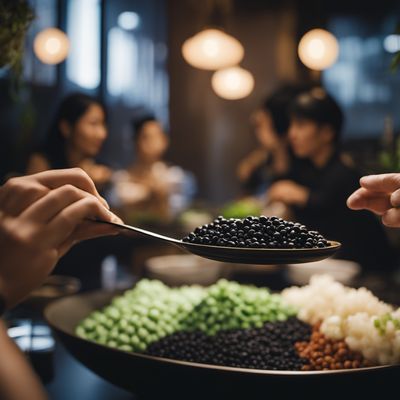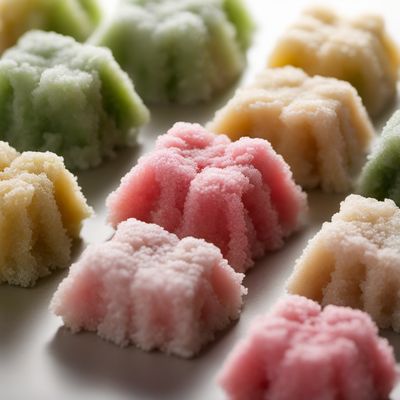
Recipe
Kashiwa-mochi: Traditional Japanese Sweet Rice Dumplings
Delicate Delights: Kashiwa-mochi - A Taste of Japan's Sweet Tradition
4.8 out of 5
Indulge in the delightful flavors of Kashiwa-mochi, a traditional Japanese sweet treat. These delicate rice dumplings are filled with sweet red bean paste and wrapped in fragrant oak leaves, offering a unique and charming culinary experience.
Metadata
Preparation time
30 minutes
Cooking time
15 minutes
Total time
45 minutes
Yields
10 servings
Preparation difficulty
Medium
Suitable for
Vegetarian, Vegan (if using vegan sweet red bean paste), Gluten-free (if using gluten-free glutinous rice flour), Nut-free, Dairy-free
Allergens
N/A
Not suitable for
Paleo, Keto, Low-carb, High-protein, Low-fat
Ingredients
-
2 cups (400g) glutinous rice flour 2 cups (400g) glutinous rice flour
-
1 1/4 cups (300ml) water 1 1/4 cups (300ml) water
-
1 cup (200g) sweet red bean paste 1 cup (200g) sweet red bean paste
-
10 oak leaves, cleaned and soaked in water 10 oak leaves, cleaned and soaked in water
-
1/4 cup (50g) granulated sugar 1/4 cup (50g) granulated sugar
Nutrition
- Calories (kcal / KJ): 180 kcal / 753 KJ
- Fat (total, saturated): 0.5g, 0g
- Carbohydrates (total, sugars): 42g, 12g
- Protein: 3g
- Fiber: 1g
- Salt: 0g
Preparation
-
1.In a large bowl, combine the glutinous rice flour and water. Mix well until a smooth dough forms.
-
2.Divide the dough into 10 equal portions and shape each portion into a small ball.
-
3.Flatten each ball with your palm and place a spoonful of sweet red bean paste in the center.
-
4.Fold the edges of the dough over the filling, sealing it completely.
-
5.Take a soaked oak leaf and place a dumpling on top. Fold the leaf over the dumpling, securing it with a toothpick.
-
6.Steam the dumplings over high heat for 15 minutes, or until the dough becomes translucent.
-
7.Remove the toothpicks and oak leaves before serving.
-
8.Sprinkle the dumplings with granulated sugar for an extra touch of sweetness.
Treat your ingredients with care...
- Glutinous rice flour — Ensure you are using glutinous rice flour specifically, as it provides the desired sticky texture.
- Sweet red bean paste — Look for high-quality sweet red bean paste, or make your own by cooking adzuki beans with sugar until soft and mashed.
Tips & Tricks
- Soaking the oak leaves in water helps to soften them and prevent them from tearing.
- If oak leaves are not available, you can substitute them with parchment paper or banana leaves for a similar effect.
- To enhance the flavor, you can add a pinch of salt to the dough mixture.
- Serve Kashiwa-mochi fresh and warm for the best taste and texture.
- These dumplings can be stored in an airtight container in the refrigerator for up to 3 days.
Serving advice
Serve Kashiwa-mochi as a delightful dessert or snack. Pair it with a cup of green tea to complement the flavors.
Presentation advice
Arrange the Kashiwa-mochi on a beautiful plate, showcasing the vibrant green color of the oak leaves. Sprinkle some powdered sugar on top for an elegant touch.
More recipes...
For Kashiwa-mochi
More Japanese cuisine dishes » Browse all

Kuro-mame
Black Soybeans
Kuro-mame is a traditional Japanese dish that is typically served during the New Year's holiday. It is a sweet and savory dish that is made with...

Negitoro gunkan maki
Scallion and Tuna Belly Gunkan Maki
Negitoro gunkan maki is a type of sushi that is made with small, oval-shaped mounds of sushi rice wrapped in a strip of nori seaweed and topped...

Sūpu karē
Soup curry
Sūpu karē is a Japanese curry soup that is made with vegetables, meat, and curry powder. It is a hearty and comforting dish that is perfect for...






